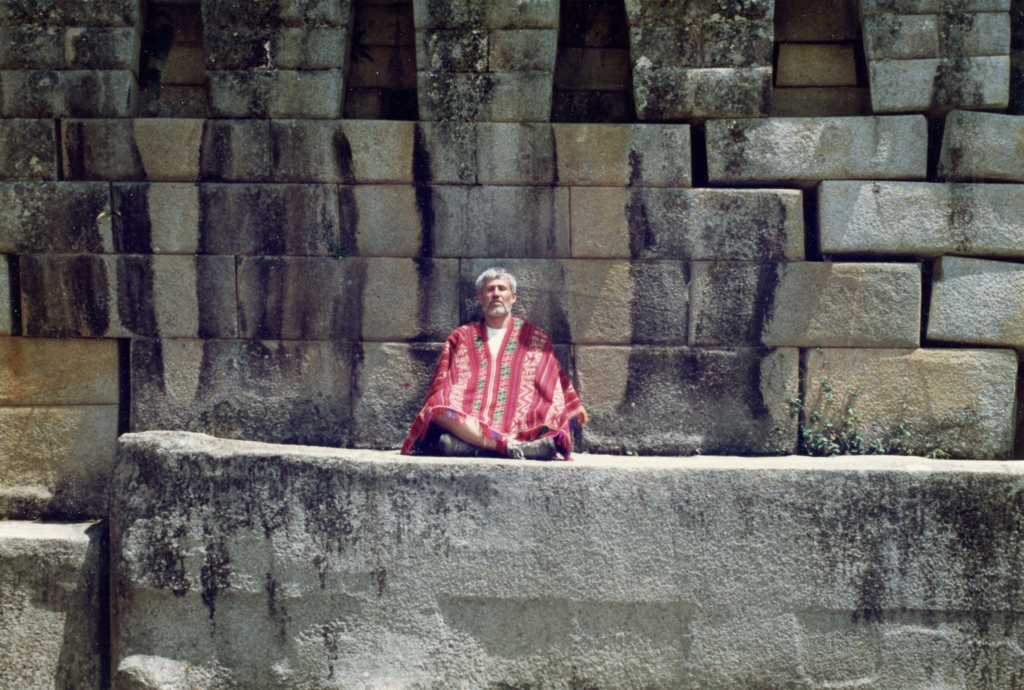
Due to excessive tourism and greed, seekers can no longer experience sacred sites as we have in the past beginning in 1981. A brief glimpse of Machu Picchu 1988 and Machu Picchu 2007.
The following is excerpted from Tequila and Chocolate, The Adventures of the Morning Star and Soulmate (available on Amazon and BookBaby):
Machu Picchu 1988
Two thousand feet below me rumbled the Urubamba River and above me was a cloudless blue sky. Surely one would consider this sliver of mountaintop a paradise on Earth. The whole of the valley below was considered sacred to the Inkas. Machu Picchu means “Ancient Mountain” and was considered a huaca – a sacred place where the power of the Earth Mother was concentrated. I definitely could feel her power, but I had a notion that Machu Picchu’s true name and purpose had long been lost and forgotten. I had an intuitive sense that the original name would have translated as “the Mountain where the Sun stands still,” indicating a sacred sanctuary of equality, balance and harmony. Metaphysically, this was a place of initiation where one’s soul cast no shadow. Additionally, for me, this mountain was a place of wonder and knowledge and an expression of Pachamama’s power and love.
Time was slipping away as I made my way up the stairs connecting the Sacred Plaza to the Intihuatana stone. This sacred carved stone’s name in Quechua means “where it is tied to the sun.” This is where Inka priests “tied” the sun during the winter solstice. We were now at the highest point in Machu Picchu. And the stone, with a little imagination, looked like the upper body of a dolphin with its fin being the actual hitching post. Explanations abound as to the purpose of this ceremonial stone, but conjecture regarding its purpose was not necessary for me. I felt the power that emanated from it. As a moth drawn to flame, I went and put my hands and forehead on it, and then sat cross-legged on the stone with my hands in the mudra (hand position) of the Cosmic Sun.
As I closed my eyes, time seemed to stop. I was not aware of the stone seat beneath me or the others by me as surreal images briefly came and then disappeared. I quickly opened my eyes as I felt the immovable sun-stone still firmly lodged beneath me. I had a knowing that I had been here before. But it was a time before the Inkas.
Machu Picchu 2007
Since 1987, sacred sites have been desecrated by an excessive influx of New Agers and tourists. Supposedly for spiritual elevation, but more for unhealthy ego, hordes of New Agers following Caucasian “neo-shamans” have invaded sacred places to their detriment. And the tourists have followed in droves. With such an increase in popularity, governments and capitalistic elites saw opportunity and the building frenzy was on.
In October 2007, I returned with two of our apprentices. This time we took the train from Cusco to Aguas Calientes, the tourist town that grew up around the Machu Picchu train station and is a 20-minute bus ride from the archaeological site. The last time I was here, I believe there was only the train station. What a change, and for the worst. Where there used to be peace and harmony while waiting for the train back to Cusco, there was now chaos and excessive commercialism. Hundreds of tourists’ flock off the trains into waiting buses to chug them up the mountain to the sacred Inka ruins. And for the ones that want to stay a few days, there are places of respite ranging from thirty dollars a night in town to more than a thousand dollars in the “palace” outside the gates of Machu Picchu.
The price to enter the ruins is ridiculous: forty dollars. However, it would be worth it if we could still do our spiritual work, which we cannot due to the hordes of people around and the fact that the places of power within the ruins are blocked off and off limits. As you have learned, the last time I was here, it was quite a different story. Not only was I able to meditate on the “hitching post to the sun” but was able to conduct ritual and ceremony within the ruins all night long. And speaking of the “hitching post,” during the making of a beer commercial, one of the camera booms dropped unexpectedly and cracked a piece off the sacred stone. After the horse has left the barn, let’s shut the door. To allow a commercial to be made in such a sacred place in the first place is wrong, a tragedy, and demonstrates the scourge of capitalism. After this happened, a rope barrier was put up around the sacred stone. In a scene right out of Monty Python, gaggles of tourists reach their hands out to within inches of the stone to “receive its energy.” Giggling, chattering a mile a minute while “receiving energy,” the New Agers, aka tourists, are once again observers of spirit but not participants.

